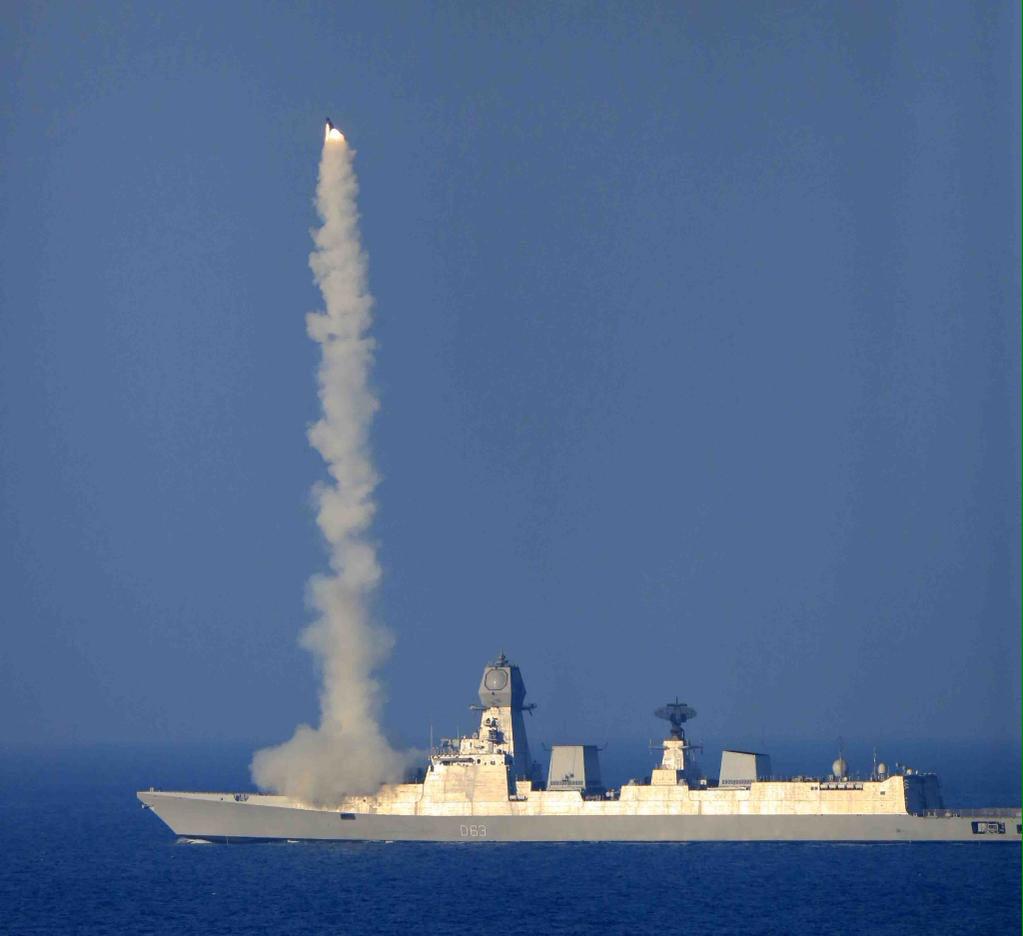Chanakya's_Chant
SENIOR MEMBER

- Joined
- Jul 22, 2013
- Messages
- 3,395
- Reaction score
- 28
- Country
- Location
Nod to new aircraft carrier, BrahMos missiles for six ships

INS Kolkata is armed with 2 x 8-cell Brahmos VLS launchers

INS Kolkata is armed with 2 x 8-cell Brahmos VLS launchers
The government on Wednesday gave its nod to building a second indigenous aircraft carrier, defence ministry sources said.
In a meeting of Defence Acquisition Council (DAC) chaired by Defence Minister Manohar Parrikar, Rs.30 crore was allotted for the preparations for the carrier.
The DAC also gave nod to arming India's three Delhi-class destroyers, and three Talwar class frigates with BrahMos supersonic missiles at a cost of Rs.27 billion.
It also approved replacement of Indian Air Force's ageing fleet of 56 Avro aircraft with airbus C-295.
An amount of Rs.119.29 billion was allotted for this purpose, where 16 C-295 planes will be purchased in fly away condition, while 40 will be made in India.
It also approved buying 145 M777 light guns from US under foreign sales for Rs.29 billion.
The government also approved Russian proposal for manufacturing Kamov Ka-226T light helicopters in India. A total of 197 helicopters will be built.
Source:- Nod to new aircraft carrier, BrahMos missiles for six ships | Business Standard News
Till now Brahmos has been inducted in eight warships of the Indian Navy. The following ship classes of the navy are equipped with BrahMos:
- Rajput-class destroyers – INS Rajput has its existing two P-15 Termit AShm replaced with four Brahmos missiles in 2 twin inclined launchers with in 2003. INS Ranvir and INS Ranvijay were armed with one 8-cell Brahmos VLS launcher.
- Talwar-class frigate – The three later ships, INS Teg, INS Tarkash, INS Trikand were armed with one 8-cell Brahmos VLS launcher.
- Shivalik-class frigate – the three frigates in this class are armed with one 8-cell Brahmos VLS launcher.
- Kolkata-class destroyer (one active and two more under construction) – armed with two 8-cell Brahmos VLS launchers.
- Talwar-class frigate – INS Talwar, INS Trishul and INS Tabar armed with one 8-cell Brahmos VLS launcher.
- Delhi-class destroyer – INS Delhi, INS Mysore and INS Mumbai armed with one 8-cell Brahmos VLS launcher.
























